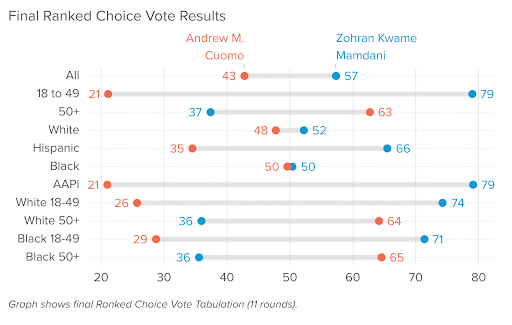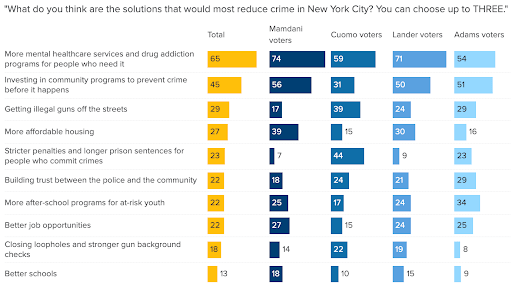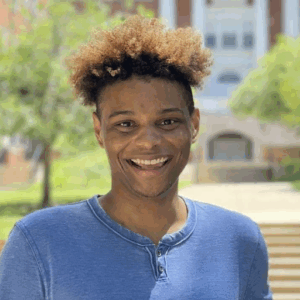Last month, Zohran Mamdani outperformed early expectations and defeated former New York Governor Andrew Cuomo in the Democratic New York City mayoral primary election (“Mamdani Wins Stunning Upset in Democratic Primary as Cuomo Concedes”; “Left-wing Democrat stuns former governor in NY mayor primary”). On behalf of Vera Action, Change Research conducted an exit poll of 1,136 Democratic primary voters from June 23-27, 2025 across New York City. Below, three of our pollsters weigh in on the three graphs that they believe tell the story of the race.
#1. The pre-election narrative about Black voters’ support for Cuomo ignored an important nuance: voters’ age.

|
|
Matt Booker: “Several pre-election polls showed Andrew Cuomo with a commanding lead among Black Democratic voters in New York City, leading to a narrative that Black voters supported Cuomo’s more moderate policy proposals, including the former governor’s “restore order” stance. The results of our survey show that, while Cuomo did relatively well among Black voters, Black voters proved not to be a monolithic bloc. Cuomo did well with Black voters older than 50, but Zohran Mamdani dominated with Black voters under the age of 50. Election analysis in this era of American politics has focused largely on race and education as dividing lines. However, age was the real split in this election, shaking up a lot of the dominant narratives about New York City voters in the process.”
|
#2. Democratic primary voters believe more mental health services, addiction programs, and community programs would reduce crime.

|
|
Ben Greenfield: “It will be no surprise to anyone reading this that there were considerable differences between the policy preferences of those who voted for Mamdani, Cuomo, or a different candidate. That said, one thing they all agree on is that more mental health services and addiction programs, as well as investments in preventive community programs, are among the most effective ways to reduce crime. Among every candidate’s voters, mental health and addictions were the #1 solution of those we presented. Now this is not to suggest that there is no support for other approaches: “Stricter penalties and longer prison sentences” were the 2nd most-selected solution among Cuomo voters, at 44%. But even among Cuomo voters, mental health and addiction programs were seen as far more effective, with 59% ranking them in their top 3. Looking at all of these data points together, it is clear that Democratic primary voters believe that reducing crime involves multifaceted solutions that address the root causes of crime.”
|
#3. Voters in NYC focused more on the future than the past.

|
|
Lauren Goldstein: “We asked voters what was more important to them as they made their choice on who to support in the primary: a candidate’s platform to improve community safety and situate prevention strategies like mental health treatment and social services alongside a police force, or a candidate’s history of supporting or opposing police funding and the ‘defund the police’ movement. Overwhelmingly, voters prioritize the former. This tells me two things. First, that ‘defund the police’ didn’t land as the potent line of attack that tough-on-crime advocates might have hoped for. Voters simply weren’t persuaded. Second, in a primary without an incumbent, there appeared to be little appetite for villainizing other candidates on public safety issues. What resonated more was a forward-looking approach: voters gravitated toward candidates focused on delivering real safety solutions, not just litigating past positions. Together, these results show the importance of nuanced polling that goes beneath the surface to assess what voters truly prioritize. Simply polling on how popular a slogan is, or isn’t, or lumping all voters of a certain demographic together in analysis without looking for nuance, won’t tell you how voters actually think about an issue or what kinds of solutions they embrace.”
|
Link to public toplines
Link to public crosstabs



